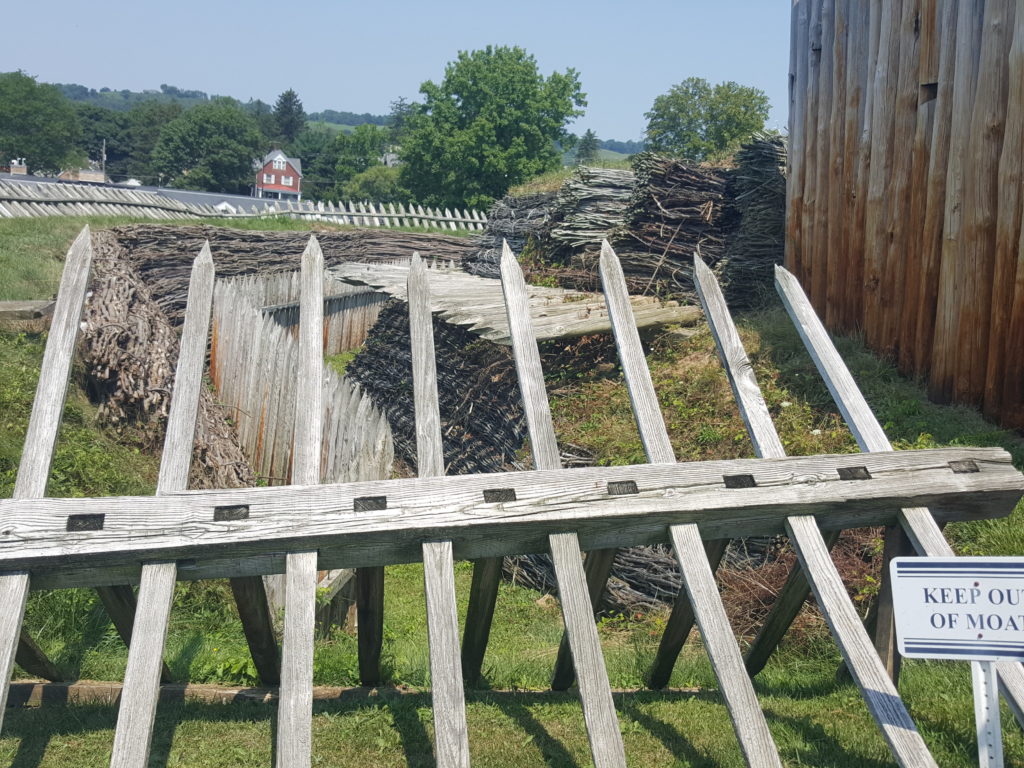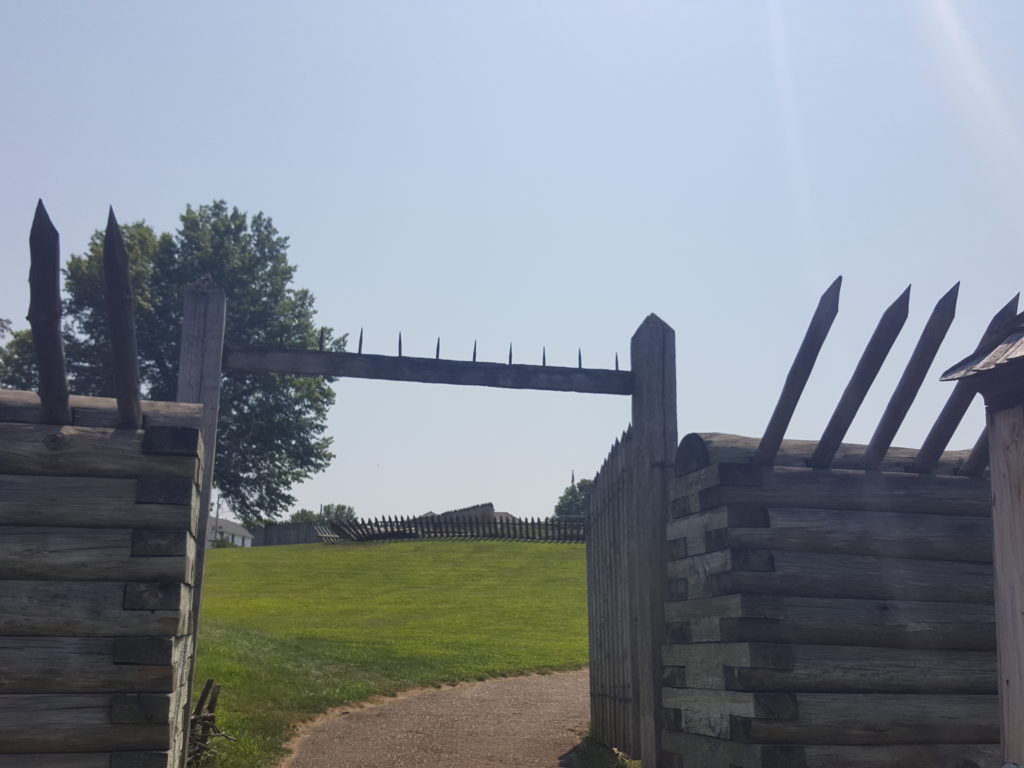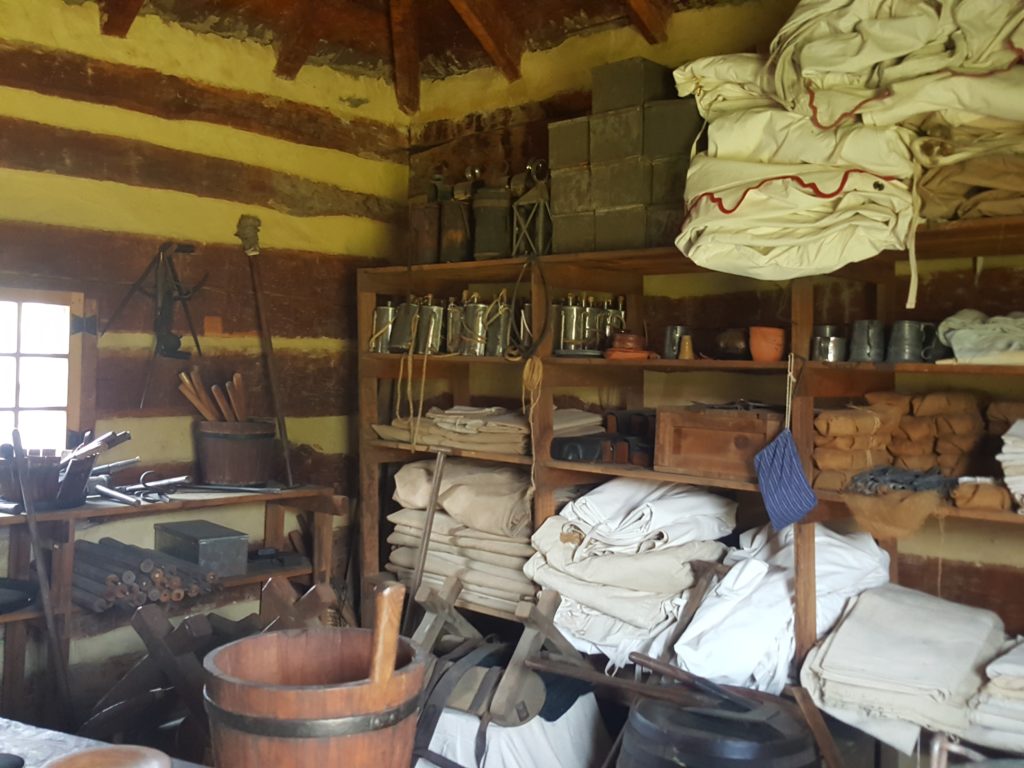George Washington started it.
Beginning with Washington’s disastrous, accidental skirmish at Jumonville Glen, about fifty miles from Pittsburgh, the Seven Years War turned into a world-wide battle that built and broke empires. By the end of the war, Prussia had barely survived and Great Britain dominated India, North America and the West African slave trade. France was on the road to revolution and Spain on its way to irrelevance.
Last week, Al and I visited an important Seven Years War site: Fort Ligonier, in Ligonier, PA.
The war didn’t begin well for the British in North America. The 1755 Braddock expedition towards present-day Pittsburgh ended in the death of General Braddock and a disorderly retreat (read my short story about the Braddock expedition HERE). But, by 1758, the British prepared to once again try to gain possession of the headwaters of the Ohio River. They learned from the catastrophic Braddock expedition that they would need a supply depot and a point of refuge in case their new effort also ended badly. In short, they needed a fort.
Construction of Fort Ligonier
The only British forts between Carlisle and present-day Pittsburgh were Forts Loudoun, Lyttleton and Bedford, all too small and too far from the forks of the Ohio to suit British purposes. The British placed General John Forbes, a Scotsman, in charge of this latest attempt to dominate the interior of the great North American continent.
He chose as the site for his new fort a rise fifty feet above Loyalhanna Creek, halfway between Bedford and Pittsburgh. He named it Fort Ligonier, in honor of his superior, Sir John Ligonier. Ligonier, a Huguenot refugee, had risen through the British military ranks to become the overall commander of the British army.
Forbes was determined to succeed where Braddock had failed, in dislodging the French from the forks of the Ohio. In early September of 1758, 1500 men began construction of Fort Ligonier under the management of Major James Grant, Ensign Charles Rohr and Colonel James Burd.
The French Defeated
Of course, the French knew the British were coming. On October 12, they sent a party to attack Fort Ligonier while it was still under construction. By that time, 6000 British and colonial troops manned the fort – making Ligonier briefly the largest community in Pennsylvania after Philadelphia – and they easily defeated the French.
The French suffered other blows in October of 1758. That same month, Forbes sent Colonel Henry Bouquet, along with George Croghan and a contingent of colonials, to a peace conference with France’s Indian allies. The result of the Easton Conference was a treaty between Great Britain and the Iroquois, Lenape, Mingo and Shawnee peoples. The Indians would abandon their alliance with the French if and the British promised to prevent white settlement west of the Alleghenies. We see how well that second part worked out, since I am writing this from the suburbs of Pittsburgh.
The French understood that they could not hold Fort Duquesne against Forbes’ force, especially without their Indian allies. The Forbes expedition set off from Fort Ligonier on November 15, 1758, with no tents and limited supplies, intending to move fast. On November 25, they arrived to find that the French had blown up and mined the fort, and then abandoned it. The future site of Pittsburgh, and the gateway to the vast North American interior, was theirs.
Decline and rebirth of the fort
Fort Ligonier served as a refuge for white settlers fleeing their homes during Pontiac’s rebellion in 1763. But, by 1766, it no longer had a purposes and Arthur St. Clair was appointed civilian caretaker. The fort slowly fell into ruin. In 1794, James Ramsey bought large tracts of the land originally owned by St. Clair. His son, John Ramsey inherited the land and in 1817 laid out the town he named Ramseyville. The town changed its name to Wellington not much later, and finally to Ligonier.
In the nineteenth century, Ligonier was known for agriculture, coal, stone and lumber. By the early twentieth century, interest in the historical fort began to grow. In 1927, John Jacob Hughes purchased the former site of the fort and presented it as a gift to the local Daughters of the American Revolution.
The DAR erected a monument at the site of the fort in 1934, and by 1946 a Fort Ligonier Memorial Foundation came into being to explore a reconstruction. The reconstructed fort opened in 1954, almost exactly 200 years after Forbes first conceived of a supply depot above the Loyalhanna.
Our visit to Fort Ligonier
Al and I had a wonderful time visiting the fort. The reconstruction is meticulous, and the museum has much improved and expanded since our last visit several years ago. The museum features what my husband tells me is an excellent miniature model of the fort, as well as a reconstruction of St. Clair’s parlor. The historical exhibits on the two galleries are very informative from both the micro view of the Forbes expedition and the macro view of the Seven Years War. Don’t miss George Washington’s pistols, a recent museum acquisition.
We had a delicious lunch at Carol & Dave’s Roadhouse in downtown Ligonier (think before your order wine; their pours are very generous!). And then we enjoyed the shops in Ligonier’s shopping district. Al loved the Toy Soldier Gallery. I bought some fancy loose tea at Crumpets Tea Shop (they made a blend just for me!), and started my Christmas shopping at My Honeybee. I’m old enough to be pretty jaded by gift shops, but My Honeybee was definitely special. The clerks in both shops were super-friendly. Ligonier benefits from their proximity to a Mellon estate. The shops are high-end but not overly pricey and there’s not a chain store to be found. This trip was so worth the 90-minute drive from Pittsburgh!
Here’s a sampling of our photos of taken at the fort.
Coming up…
The trip to Ligonier made me curious about so many people who were part of the Forbes Expedition. Was the Pittsburgh suburb of Upper Saint Clair named after John or Arthur St. Clair? Why? How did George Washington get in trouble again at Loyalhanna Creek? And why is Pittsburgh’s Grant Street named after Major James Grant? These questions and more will be answered in future posts. Also, this fall Al and I will be travelling the final sections of the National Road in Ohio, Indiana and Illinois. Stay tuned!
Sources
Lorant, Stefan. Pittsburgh: The Story of an American City. Lenox, Massachusetts: Authors Edition, Inc., 1988.
Stotz, Charles Morse. “The Reconstruction of Fort Ligonier: The Anatomy of a Frontier Fort.” Bulletin of the Association For Preservation Architecture, Vol. VI, No. 4 (1974), 2-103
https://forbesroadbook.com/historical-context/











